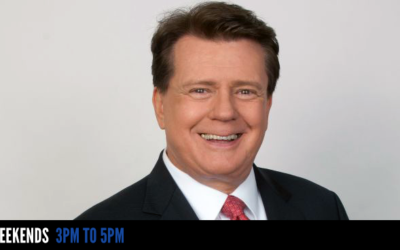I remember my first bass rig. 1975. A sunburst Fender Precision copy and a small no-name transistor combo amp. Light weight, compact. I just threw it all into my Delta 88 Royale and drove. Easy. No muss, no fuss. But as the years went by, and the bands got better, and I started to make a little money, my speaker cabinets got bigger and the amplifiers heavier, until I was finally hauling around an Aguilar DB750 head and a couple of “4 by 10” Eden cabinets.* (Did I forget to mention the compressor and rack?) The sound was awesome! I could turn the master and gain knobs to 2 or 3 and push my band with clean tone and endless volume. Yes, I was the “King of Bottom”. But my lower back started talking to me, and it was not with kindness. Rolling the cabinets to my car with a hand truck, I felt the pain as I anticipated the angled, awkward lift into the back seat. And then there was the head—750 watts and 43 pounds of compact tube power. I felt like one of those Olympic athletes doing the hammer throw just to get that thing into the car. As part of a middle age rock band, something had to give. It was a stark, clear choice–my back or my equipment.
Over the past few years, as I’ve wandered the aisles of Guitar Center, I began to notice some pleasant developments–heads with tube pre-amps that cut their weight down dramatically; lighter materials used in speaker and cabinet construction. I also realized that for most gigs, a “2 by 10” cabinet was just fine. Then I found a “4 x 6”, even lighter. At 32 pounds, it sounded great. My back cried with joy as I lifted that baby and dropped it into the trunk of my car.
But there was some personal business to attend to. It dawned on me that I had become attached to my equipment, not just materially, but psychologically, emotionally. Playing throughout the 70’s and 80’s, I worshiped at the “altar of analog and tubes”. My identity had become rapped up in that SVT Classic, that stack of 10’s and 15’s. It was gear as fetish. Shifting to lighter equipment required a kind of letting go, a detachment from that image of myself as some sort of rock god standing before my heavenly wall of sound. But I did let go, and I am here to testify to the joy of liberation from bass rig hell. As I watched my Aguilar disappear into another players car, I felt a weight (literally) lifting off my back. And when I slipped that 8 pound Mark Bass head into my back pack and then over my shoulder, picked up my little “4 x 6” cube, and headed off for my indie rock gig, it was with deep joy, satisfaction…and relief. But make no mistake. That little head can easily power any “8 x 10” stack, no problem. And did I mention my new Danelectro bass. Yes I know—made in China. But for what it is and what it can do, I love it. Those six pounds of punchy, utilitarian bass feel great in my gig bag. My ‘76 Fender P Bass and ’78 Stingray (where did they find that leaden wood in the 70’s?) can wait on their stands, ready to be lifted and plugged into the wall of speakers that sits unmoving in my home studio. Of course, there is nothing like the vintage feel and sound of those historic axes and monster cabs and they do still come out with me…on special occasions.
I had a patient a few years ago who was playing guitar in the Abba musical, “Mama Mia”. A serious player, he had toured with some of the top acts of the last thirty years. After hobbling into my office, suffering from a flare-up of his 25 year old chronic low back condition, I treated him, did my chiropractic thing–adjustments followed by a series of exercises and stretches that he needed to do so he could get back into the pit and stay out of my office. And we talked—of Marshall Heads and Thunderbirds—of the heavy equipment of his profession. And he told me about the producer of Mama Mia, about how that producer told him which amp he would be using for the show. It was the “Line 6” digital modeling amplifier. The player recoiled at the thought. He, who had a studio full of classic guitar tube amps and cabinets back in New York, was being told to play through this “imitator”. His old school sensibilities were being offended. But the player told me that when he plugged in, and flipped the dial to “60’s Vox AC30”, out came that sound, the one that brought back all those memories, tastes, and feelings. Even better—every time he hit “60’s Vox” the same sound came out. No temperamental tubes reacting to the climate of the room. No lag time while they warmed up, finally finding their sound. That producer knew what he wanted. He wanted predictable sound every night, every show. And at a fraction of the weight of the real Vox, he had the added benefit of cutting down on costly work injuries.
There is no real substitute for the sound of a Les Paul plugged into a Mesa Boogie Rectifier or a J-Bass played through a Fender Bassman. But we middle aged (and younger) players, whose roadies have long since left us, know that our bodies must be protected as well as our beloved equipment. And just as our forbears embraced the new technology of electric music back in the 1950’s, it is time for us to embrace the new wave of ergonomically friendly instruments and amplifiers. I was skeptical about an 8 pound amp providing the power I needed. But when I stepped onto the stage in front of a full house at Biscuit and Blues in San Francisco, plugged in, lifted my Washburn acoustic, and heard that sweet bass sound coming through my little “4 by 6” and watched that crowd light up to the lovely sounds of the Bitter Mystics, I knew that there was no turning back. At 54, I still have many years of playing left in me. Using this new light weight technology, those years will more likely be spent pain free, so I can just ride the deep bass waves with ease, into the sunset.
*For those who do not understand equipment lingo, reference to “4 by 6” or “2 by 10” cabinets refers to the number and size of the speakers in the cabinets, so that a “4 by 6” refers to a cabinet that has four six inch speakers while a “2 by 10” has two ten inch speakers.
Dr. Ricky Fishman is a San Francisco Chiropractor and has been a performing electric bass player for over thirty years. He runs the Musicians Chiropractic Project which specializes in the treatment of musicians injuries and offers special rates for uninsured players.
[email protected] www.rickyfishman.com












I know your pain (literally and figuratively)! I discovered Line 6 modeling amps and instruments about 5 years ago and they are quite the lifesaver. I have a single floor pedal that (when plugged into the house PA) can give me the sound (arguably to some) of a myriad of classic guitar and bass amps at the stomp of a single button. “Look ma’, no amps!” I even have a modeling guitar that can accurately emulate the sound of 20+ classic guitars, a banjo, a sitar, even acoustic instruments (without the threat of feedback). Much easier to take a single guitar and a simple pedal board to a gig. Easy set-up and tear down and while purists can thumb their noses at the technology, I’ve never lost a bet from those who claim to be able to spot the ‘fakes’.
In the end, it’s about making music and if lugging a truckload of gear doesn’t wear me out maybe I’ll be able to play out a little longer too.